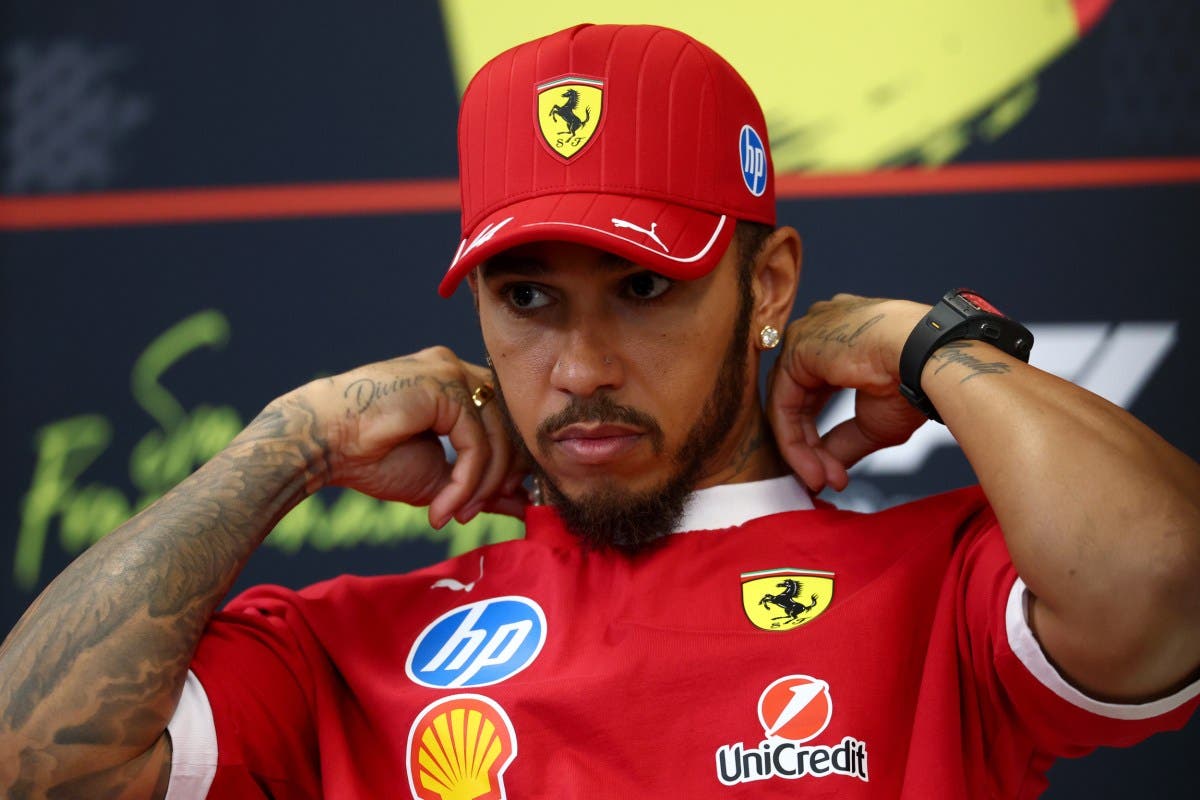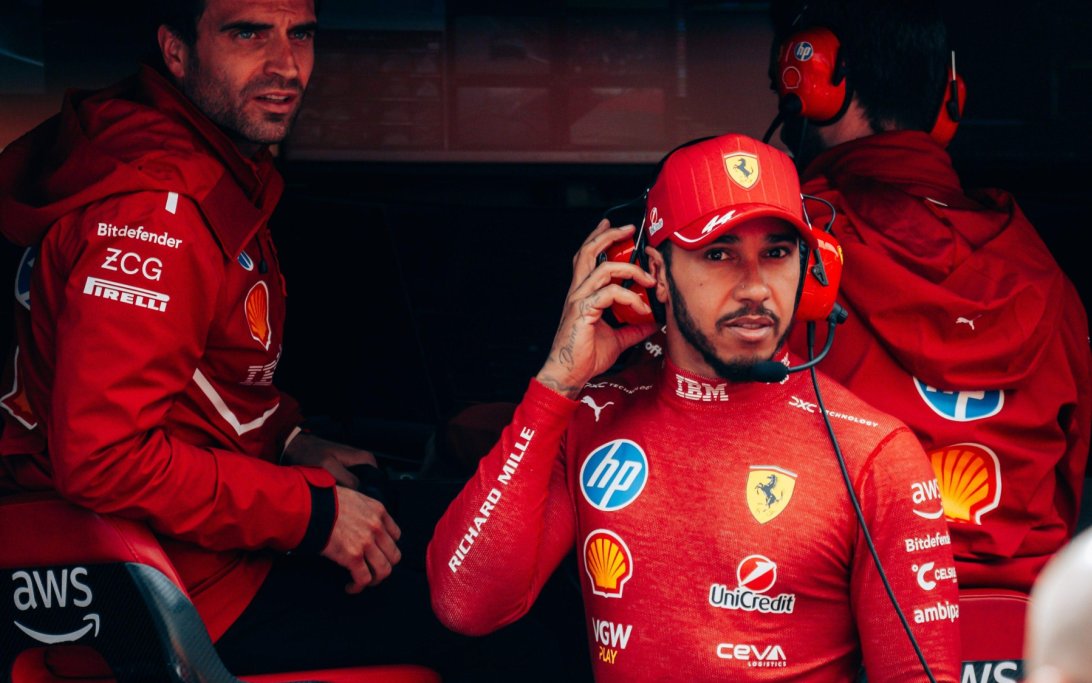The world of Formula 1 operates on a cycle of expectation and crushing reality, and nowhere is that cycle more brutally evident than at Scuderia Ferrari.
The arrival of Lewis Hamilton, arguably the sport’s greatest icon, to Maranello was meant to herald a new golden era, the final piece of the championship puzzle.
Yet, the season swiftly devolved into a nightmare, an unforgiving public display of the team’s endemic technical failures.
In the wake of that disaster, Ferrari has not merely shuffled its deck; it has burned the entire rulebook and initiated a technical revolution so radical it has stunned the entire paddock, leaving Hamilton’s hopes for a record-breaking eighth world title hanging precariously on the precipice of the most dangerous gamble in the team’s recent history.

The Brutal Reality of the Disaster
For Lewis Hamilton, the first year was supposed to be the honeymoon phase, a transitional year soaking in the unique atmosphere of the Tifosi before the game-changing regulations arrived. Instead, it became a year of humiliation and profound disappointment. The SF-25, the machine Ferrari had pinned its hopes on, was a catastrophic failure, a car that looked like a champion on paper but collapsed under the unforgiving scrutiny of real-world competition.
The core issue lay in a fundamental, reckless technical gamble: a risky low-ride height philosophy that was immediately exposed when the FIA tightened regulations on skid block wear and ground effect exploitation. This shortcut, intended to unlock performance, instead revealed the team’s biggest systemic weakness. Watching Hamilton, the master of precision and tyre management, struggling often just to cling onto P8 in the midfield while his predecessor, Carlos Sainz, celebrated podium finishes with rivals, provided a painful contrast that few could ignore. This was not bad luck; this was a fundamental technical and philosophical breakdown built into the car’s DNA.
The structural confusion was best symbolized by the car’s suspension package. At the front, Ferrari opted for a conservative pull rod design. At the rear, they went with an overly aggressive approach. The result was not a harmonious balance, but a Frankenstein’s monster of incompatible concepts that delivered the worst of both worlds. For Hamilton, a driver whose entire career is built on the confidence derived from exceptional stability under braking, the inconsistency was torture. The car would flash potential on a Friday, only to slide out of its narrow performance window and vanish into the midfield on Sunday. This volatility was unforgivable, culminating in Hamilton’s frustrated radio message where he publicly admitted he “couldn’t care less about P8,” a champion calling out Ferrari’s broken technical structure for the world to hear.
Vasseur’s Radical Centralization: Tearing Down the Wall
The traditional Ferrari response to failure has often been one of minor personnel shifts and promises of better things next year. But Team Principal Fred Vasseur understood that the collapse was symptomatic of a deeper, systemic illness. Instead of merely applying a band-aid, he chose a surgical, radical solution: tearing apart the horizontal management style that had plagued Maranello for years.
For decades, Ferrari’s technical operations were marred by a diffuse management structure where responsibility was spread so thinly that accountability evaporated into the atmosphere. Vasseur has now thrown out that system entirely, replacing it with a bold, new model of centralized power. Every critical decision—every technical call, every philosophical direction for the future car—now runs directly through his office. This is more than a simple shake-up; it is a declaration that the era of chaos and indecision is over. Vasseur has staked his entire tenure, and perhaps his career, on this restructuring, signaling that Ferrari is finally done playing it safe.

The 2026 Superteam: Three Titans to Fix Every Flaw
Alongside the organizational overhaul, Vasseur has unveiled a handpicked technical dream team, a trio of engineering titans specifically chosen to address every weakness that destroyed the SF-25. This is not a team designed to chase incremental improvements; it is a team assembled to build a championship contender from the ground up, tailor-made for Lewis Hamilton’s driving style and the demands of the upcoming regulatory reset.
1. Loic Serra: The Suspension Whisperer
At the top of the incoming talent list is Loic Serra, a proven former Mercedes expert. His mission is crystal clear and perhaps the most critical for Hamilton: to completely rebuild Ferrari’s entire suspension philosophy. Serra’s expertise lies in the intricate relationship between suspension design and tyre behaviour—the exact area where the SF-25 was most flawed. For Lewis Hamilton, a driver who relies on absolute trust in the car’s rear end when braking late and aggressively, Serra’s influence could be a complete game-changer, promising the stability and confidence that was non-existent in the previous season.
2. Diego Tondi: The Aerodynamics Architect
Ferrari’s other major chronic weakness has been its unpredictable aerodynamics, often looking strong in the simulator only to suffer a sudden collapse in performance on race day. Enter Diego Tondi, Ferrari’s new aerodynamics boss. His task is to finally provide Ferrari with a car that delivers consistent, predictable downforce across every single circuit on the calendar. With the 2026 regulations placing an unprecedented emphasis on aerodynamic efficiency and manageable flow structures, Tondi’s role is not just important—it will be decisive in determining whether the Scuderia fights for titles or falls back into the familiar pattern of mid-season mediocrity.
3. Frank Sanchez: The Integration Specialist
The most vital, yet perhaps most overlooked, role is that of Frank Sanchez, the new Integration Boss. The disaster of the SF-25 was fundamentally an integration failure: the suspension, the aerodynamics, and the power unit failed to function as a cohesive whole. Sanchez’s job is to ensure that the three major technical pillars of the new car—Serra’s suspension, Tondi’s aero, and the revised power unit—do not function as separate, competing projects but as a single, unified machine. This is the necessary firewall against the structural self-sabotage that defined the previous season, ensuring Hamilton never again drives a car that feels like it’s “fighting itself”.
The Context of 2026: A Golden, Dangerous Window
This ambitious overhaul comes at the most opportune, yet terrifying, moment: the 2026 regulatory reset. The new rules will wipe the slate clean, changing everything about how cars are designed and raced, offering every team a rare, golden window of opportunity to leapfrog their rivals. For Ferrari, this is their moment of reckoning.
Their main competitors are facing their own internal turmoil. Red Bull, the dominant force of the current era, is grappling with unprecedented internal instability and leadership questions. Mercedes has taken its own gamble, betting heavily on the raw, unproven talent of Andrea Kimi Antonelli alongside George Russell. McLaren, while strong in the current cycle, faces the unknown variable of the new 2026 regulations.
This leaves the track clear for Ferrari. If Vasseur’s centralized structure and the new technical team execute their mission perfectly, 2026 could finally deliver the Ferrari vs. Red Bull championship battle fans have been waiting for. But the risk is monumental: if they fail, the consequence won’t just be a lost season; it could permanently cement Ferrari’s reputation as a team doomed to collapse under pressure, destroying Hamilton’s dream in the process.

The Weight of the Tifosi and Hamilton’s Legacy
The weight of expectation on Maranello is not simply derived from internal pressure; it comes from the Tifosi, the most passionate, demanding, and utterly patient fanbase in all of sport. They have endured years of broken promises and fleeting hope. Every missed opportunity has amplified the immense pressure now resting on the shoulders of Lewis Hamilton and Fred Vasseur.
For Hamilton, this is the ultimate gamble of his extraordinary career. He came to Ferrari not merely to drive in red, but to bring order to the chaos and lift the Scuderia back to the top. His dream of an eighth championship—the record-breaking, history-defining title—is now entirely reliant on the success of this radical technical restructuring. Should Ferrari stumble again, his move will be remembered not as the crowning glory of a champion but as the single biggest, most painful disappointment of his career.
The stakes are equally high for Vasseur. He has bet his entire future on this project, tearing down the old establishment and staking everything on his handpicked dream team. If the 2026 car fails to deliver, Vasseur’s tenure at Maranello will likely end in disaster, forever remembered for the ambition that crumbled.
The convergence of the Tifosi pressure, the Hamilton legacy, and the Fred Vasseur gamble defines this moment. Ferrari now stands on a knife’s edge. Only time will tell if 2026 marks the birth of a dominant new dynasty fueled by a technical revolution, or if it will be recorded in history as yet another heartbreaking false dawn for the most famous team in Formula 1. Lewis Hamilton’s ultimate quest now depends on whether the new Superteam can finally build a machine worthy of his unparalleled talent.